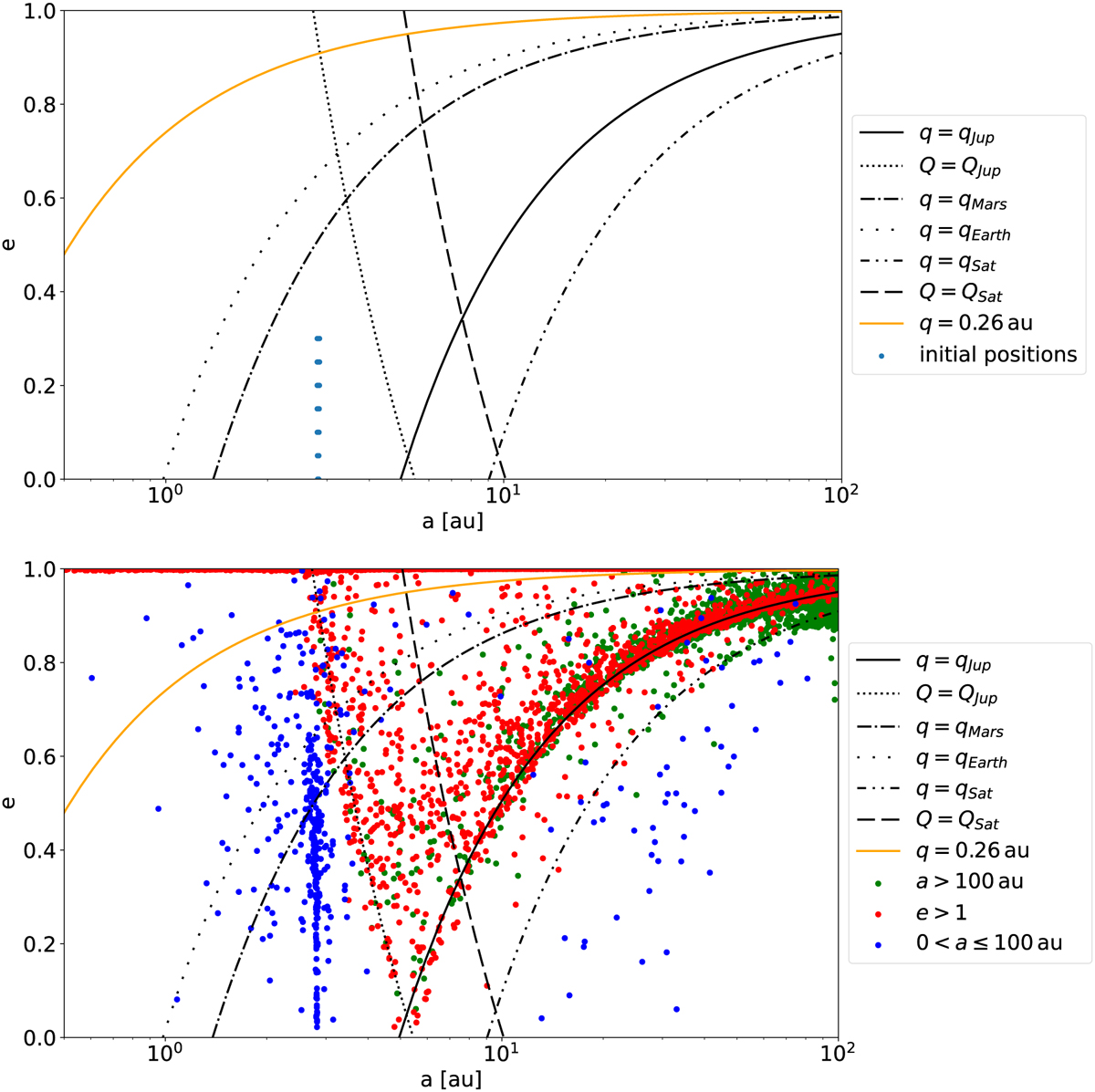Fig. 6

Download original image
Initial (top) and final (bottom) distribution of test particles in our simulation. Green and red dots in the final distribution represent the positions from which the particles were ejected to hyperbolic orbits (red dots) and orbits with a > 100 au (green dots), whereas particles that survive whole simulation for 10 Myr are blue. Black lines represent the sets of (a, e) where a particle can be to have a perihelion (or aphelion) distance equal to the perihelion (or aphelion) distance of one of the planets. Planets are specified in the legend. For example, qJup represents the perihelion distance of Jupiter, QJup the aphelion distance of Jupiter, etc. The orange line represents the perihelion distance of q = 0.26 au.
Current usage metrics show cumulative count of Article Views (full-text article views including HTML views, PDF and ePub downloads, according to the available data) and Abstracts Views on Vision4Press platform.
Data correspond to usage on the plateform after 2015. The current usage metrics is available 48-96 hours after online publication and is updated daily on week days.
Initial download of the metrics may take a while.


